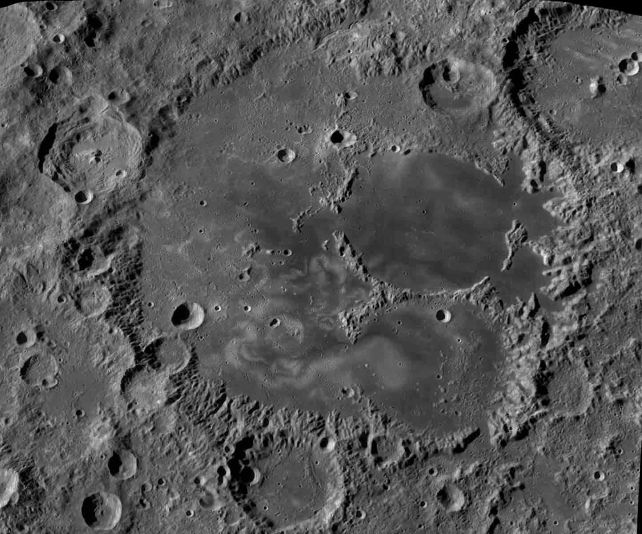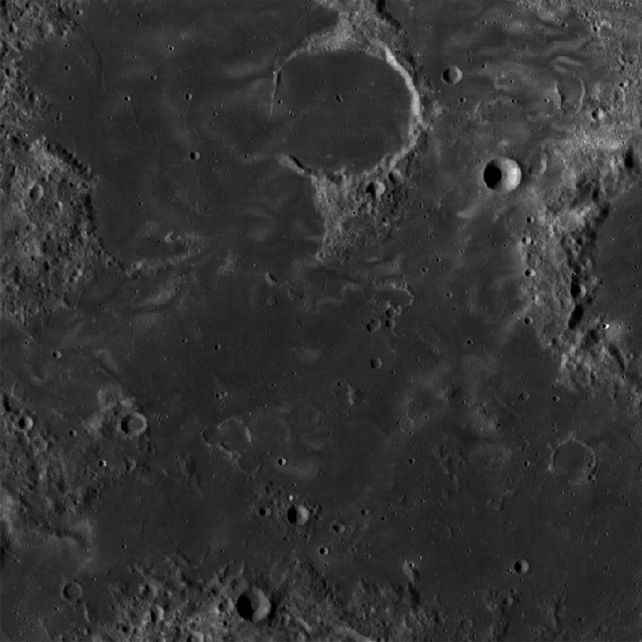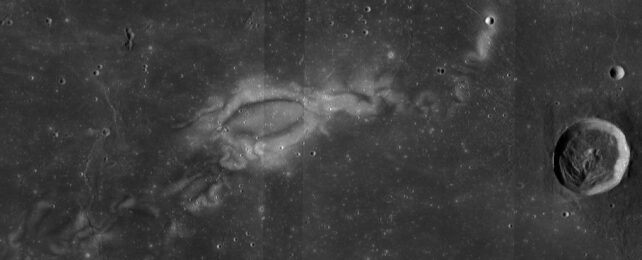Swirling patterns etched into the surface of the Moon appear to be linked to changes in the shape of that surface, after all.
In a close study of mysterious features known as lunar swirls, scientists have found that at least two of them are linked to lunar topography. This is a clue that could help scientists finally figure out what causes these bright curlicues, the origin of which has so far eluded explanation.
"The canonical interpretation of lunar swirls is that topography has no bearing on the location or shape of the swirl," explains planetary scientist John Weirich of the Planetary Science Institute.
"However, Domingue et al. found the bright areas of the lunar swirl in Mare Ingenii have a lower elevation than the dark lanes between them. They reached this conclusion by generating and examining topographic data for lunar swirls at a higher resolution than had previously been performed."

Lunar swirls are strange and beautiful. As the name suggests, they are swirling patterns that can be found on the Moon, both in the dark mare (plains of dark, volcanic lunar basalt) and in the bright highlands. They are characterized by bright curling lines, separated by darker gaps between them.
We know some things about them. Every lunar swirl identified to date coincides with a magnetic field over the lunar surface, which scientists think deflects solar particles, preventing space weathering from affecting the swirls as much as the ground around them. There also seems to be a connection between lunar swirls and lava tubes buried beneath them.
It was thought that there was no connection between the shape of the surface and the shape of the swirls, but recent work has shown that that might not be true.
A team led by planetary scientist Deborah Domingue of the Planetary Science Institute found that, in a swirl in a region known as Mare Ingenii, the bright lines are lower than the darker lanes between them, by about 2 to 3 meters (6.6 to 9.8 feet).
Finding this once is interesting, but not enough to determine a link. So, Weirich and his colleagues undertook an investigation of another swirl, the most famous, known as Reiner Gamma. They took data from the Lunar Reconnaissance Orbiter Camera, and processed it using a suite that includes machine learning to derive the topography of the surface at high resolution.
And their results were similar to those of the swirl seen in Mare Ingenii.
"In this paper we studied Reiner Gamma and found the bright areas are about 4 meters (13 feet) lower than the dark areas," Weirich says.
"However, it is not as simple as the bright areas are uniformly lower than the dark areas. If that was the case this relationship between topography and swirl would be easy to demonstrate by comparing an elevation map to a picture of the swirl. Instead, this relationship is only seen when we compare the average height of the bright areas and the average height of the dark areas."

This means we have now seen the elevation changes in two of the swirls, suggesting that the Mare Ingenii observations were not some weird coincidence or fluke. It will take studying a few more, perhaps, to establish a pattern.
The information doesn't tell us the cause of the swirls, either; not yet anyway. But every new piece of information we find is a clue that could help unravel their mysterious secrets. We have nothing like them here on Earth, so scientists believe that they could tell us something unique to the Moon, its history, and what's going on underneath its quiet surface.
"There are many hypotheses about their formation process. Each hypothesis has observations that support it, but there are also other observations that contradict them," Weirich says.
"Since we don't have a full understanding on how these swirls formed, we don't completely understand the story they can tell us about the Moon. Forming them could involve a combination of well- understood processes interacting together, or a currently unknown process. Unusual objects or phenomena are sometimes the key to obtaining deeper knowledge, and for this reason lunar swirls are very intriguing."
The research has been published in The Planetary Science Journal.
